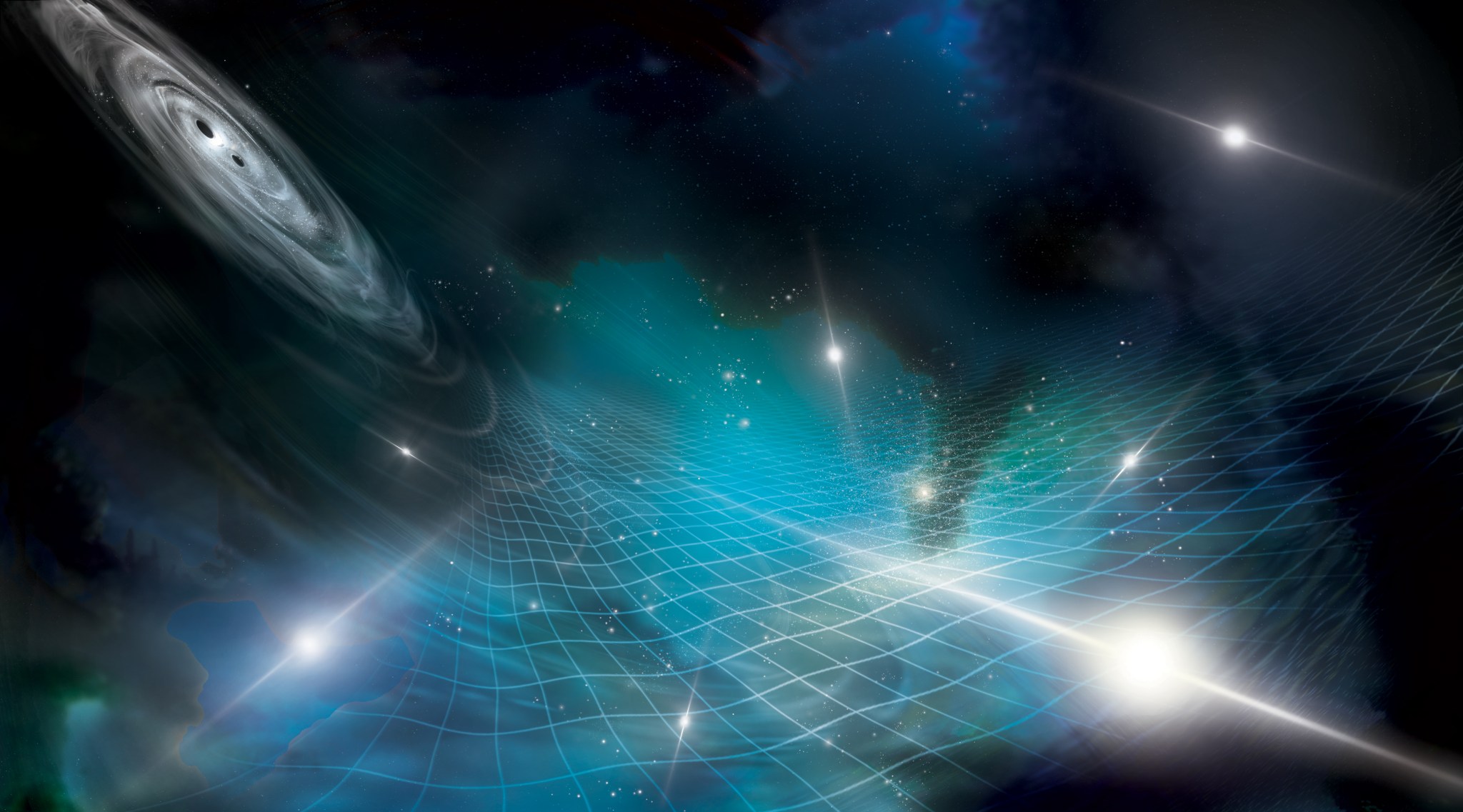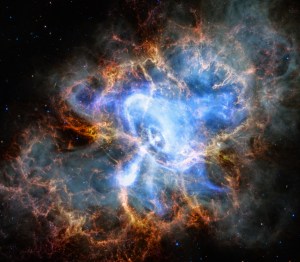
Scientists have found evidence of a universal background of gravitational waves, or ripples in the fabric of space-time.
The motion of black holes and other massive objects through space can create ripples in the fabric of the universe, called gravitational waves. On June 28 scientists announced the first evidence of a background of long-wavelength gravitational waves that fills the cosmos. These waves are thought to have been created over eons by supermassive black holes, up to billions of times the mass of our Sun, circling each other before they merge. Detecting the gravitational wave background is analogous to hearing the hum of a large group of people talking at a party, without distinguishing any particular voice.
The background ripples detected by NANOGrav could help scientists better understand how gravitational waves are created and what happens to them as they propagate through the universe. They could also be used to study supermassive black hole mergers, events that can last for millions of years. Scientists think these mergers happen in most galaxies and influence their evolution.
The North American Nanohertz Observatory for Gravitational Waves (NANOGrav) presented the evidence in a series of papers published in the Astrophysical Journal Letters. NANOGrav is a National Science Foundation-funded Physics Frontiers Center of more than 190 scientists from the United States and Canada, including scientists at NASA’s Jet Propulsion Laboratory in Southern California and other NASA centers. The collaboration has spent more than 15 years collecting high-precision data from ground-based radio telescopes, looking for these gravitational waves.
The discovery complements the first-ever detection of gravitational waves in 2015 by LIGO, the Laser Interferometer Gravitational Observatory. Those signals, at a much shorter wavelength than the new discovery, were from black holes about 30 times the mass of our Sun.
NASA is contributing to the ESA (European Space Agency)-led Laser Interferometer Space Antenna mission, a future space-based observatory that will detect gravitational waves that are in a wavelength range between those detected by NANOGrav and LIGO.
To learn more about the new result, read this news release from Caltech: https://www.caltech.edu/about/news/scientists-find-evidence-for-slow-rolling-sea-of-gravitational-waves
Calla Cofield
Jet Propulsion Laboratory, Pasadena, Calif.
626-808-2469
calla.e.cofield@jpl.nasa.gov
2023-092



























